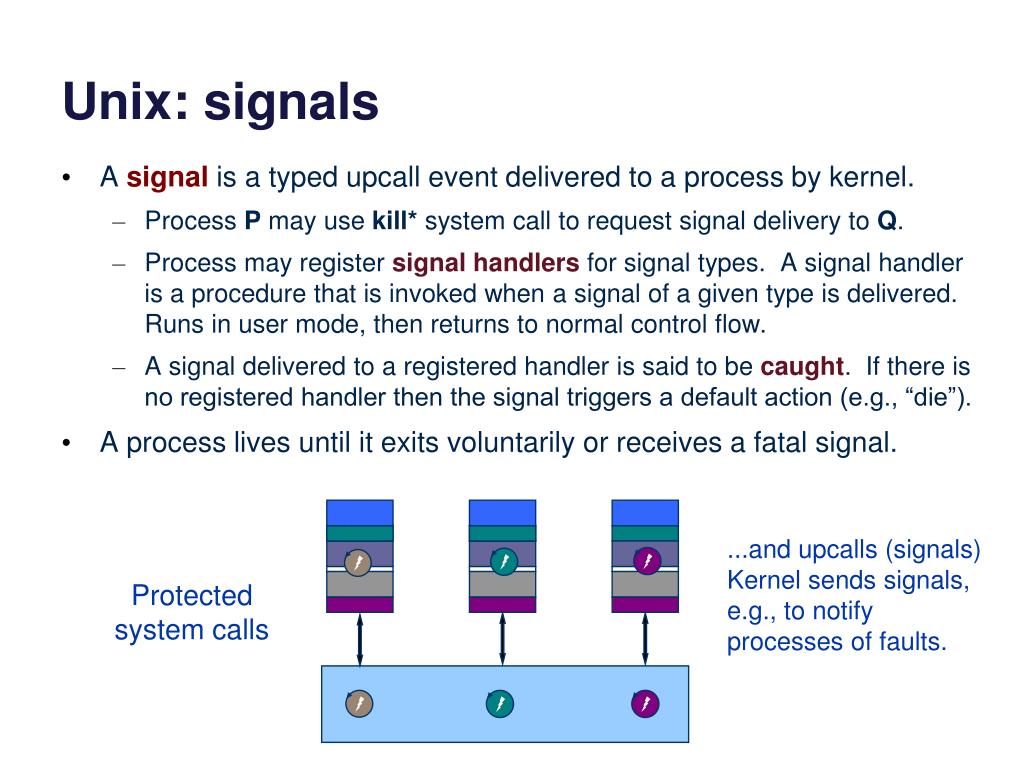
from a nix command line type in: man signal. They can do things like tell a process to quit (SIGKILL) or that a process had an invalid memory reference (SIGSEGV) or that the process was killed by the user hitting control-c (SIGINT). So, in summary, there isn't a single universally best solution because different programs are written in different styles and under different constraints. A unix signal is a kind of message that can be sent to and from unix processes. This is somewhat messy (because signals are messy), but without a more detailed description of your requirements and constraints, it is hard to know what else to suggest. 1 The documentation for titimer says that if the seconds arg is 0, this will clear the timer: setitimer (which, seconds, interval0. With multi-second gaps and no hard real-time response requirement, you might use an alarm and the SIGALRM handler can set a flag and your main processing loop can monitor the flag at convenient, sensible points and do the activity. Each process has three independent interval timers available: A real-time timer that counts elapsed time. They do this by setting a timer when the timer expires, the process receives a signal. It also depends on the accuracy of timing that you require. The alarm and setitimer functions provide a mechanism for a process to interrupt itself in the future.

If you cannot use an autonomous thread of control (process or thread), then it depends on how your program is organized, which is why there are many preferred alternatives (they are preferred for different circumstances). Can you use a separate process to do the job? If so, then using multi-processing instead of multi-threading. The problem with signal system call was that when the concerned signal was. Unix Signals Godmar Back Virginia Tech SeptemGodmar Back Unix Signals 1/101/10. If your program is not already threaded, then it gets trickier. In early Unix versions, a signal handler was set using the signal system call. This will also be generated if an attempt is made to change the action for, which. points to memory which is not a valid part of the process address space. waitpid (2) () returns 0 on success on error, -1 is returned, and.

If your program is already threaded, then using a poll thread is simple and effective. sigaction, rtsigaction - examine and change a signal action.



 0 kommentar(er)
0 kommentar(er)
